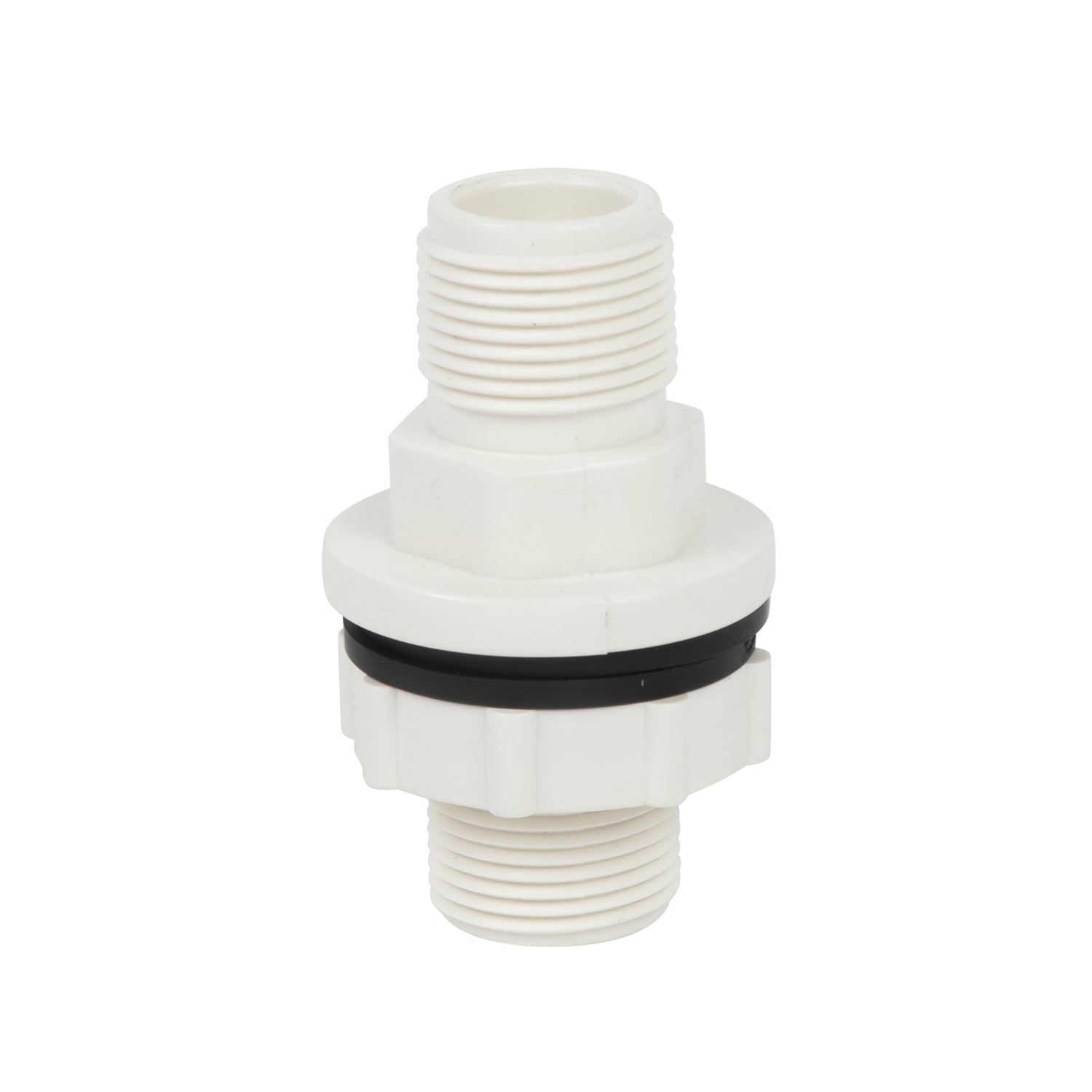


UPVC Ball Valve Specifications
Attribute | Specifications |
Size Range | 1/2" to 8" |
Standards | ASTM, DIN, JIS, BS |
Shape Options | Octagonal ball valve, Compact ball valve |
Connection Options | Threaded connection, Socket connection |
Body Material | UPVC |
Seat Seal Material | TPE |
Ball Material | PP |
Handle Material | ABS |
O-ring Seal Material | NBR |

Characteristic Description
Corrosion-Resistant Material Blend
HJ PVC Ball Valve Fitting 30 is engineered for corrosive environments, with materials selected for chemical stability. The UPVC body resists acids, alkalis, and organic solvents, while the TPE seat seal maintains flexibility even when exposed to harsh fluids. The PP ball offers excellent chemical inertness, and the NBR O-ring provides reliable sealing against corrosive media. All components are compatible with common industrial chemicals, making this valve ideal for chemical processing, pharmaceutical production, and wastewater treatment.
Size & Connection Flexibility
Available in 1/2" to 8" sizes, this valve accommodates small laboratory piping and large industrial tanks alike. It offers octagonal (for heavy-duty use) and compact (for tight spaces) designs, with threaded and socket connections that fit chemical-resistant piping systems (PVC, CPVC, PP).
Market Research
The chemical processing industry demands valves that can withstand aggressive fluids without degradation or leakage. A single leak can lead to safety hazards, environmental fines, and production downtime—driving the need for high-performance, chemical-resistant valves. HJ PVC Ball Valve Fitting 30 meets this demand with its corrosion-proof materials, leak-proof design, and compliance with industry standards, targeting chemical plants, pharmaceutical facilities, and wastewater treatment centers.
Key Features
Superior Chemical Resistance
Every component is tested for compatibility with over 50 common industrial chemicals, including hydrochloric acid, sodium hydroxide, and ethanol. The valve’s body-integrated O-ring seal prevents chemical infiltration, protecting internal parts from corrosion and extending service life.
Leak-Proof & Safe Operation
The 24-hour high-pressure air test (equivalent to 16pn water pressure) ensures zero leakage, critical for handling toxic or hazardous chemicals. The removable handle allows for safe maintenance—operators can replace parts without direct contact with corrosive fluids, reducing safety risks.
Durable for Continuous Use
For sizes 2.5" and above, the improved mold design enables bidirectional opening with minimal torque, even after years of exposure to chemicals. The valve’s structural integrity remains intact under continuous operation, making it suitable for 24/7 production lines.
Performance Meets
This valve complies with ASTM, DIN, JIS, and BS standards for chemical processing equipment, ensuring compliance with safety regulations (e.g., OSHA, REACH). Its chemical resistance meets the requirements of ISO 10933 for plastic valves in corrosive media, and the leak-proof performance exceeds industry standards for hazardous fluid handling. The valve operates reliably in temperatures ranging from -5°C to 65°C, adapting to diverse chemical processing environments.
Customized Service
We offer chemical industry-specific customization: choose from chemical-resistant material upgrades (e.g., Viton O-rings for extreme corrosion), custom pressure ratings for high-pressure systems, and branded packaging with safety data sheets (SDS) included. Our OEM service supports bulk orders with personalized specifications, such as special size tolerances or laser-etched safety labels.
FAQ
Q1: What chemicals is this ball valve incompatible with?
A1: The valve is compatible with most acids, alkalis, and organic solvents. It is not recommended for concentrated nitric acid or strong oxidizing agents—contact our team for Viton or PTFE-modified versions for these applications.
Q2: How often should the valve be inspected in chemical service?
A2: We recommend quarterly inspections for continuous use and monthly inspections for highly corrosive fluids. The removable handle allows for easy visual checks without disassembling the valve.
Q3: Can the valve be used in high-temperature chemical processes?
A3: The standard model operates reliably up to 65°C. For processes above 65°C, we offer a high-temperature modified version with heat-resistant TPE and NBR components.




